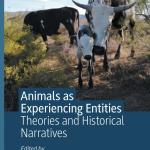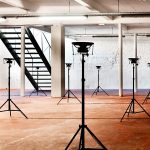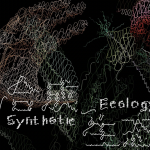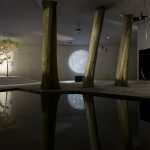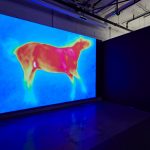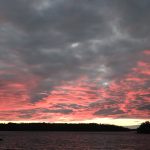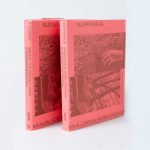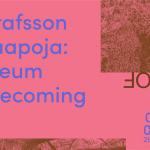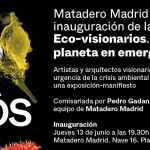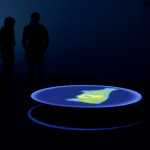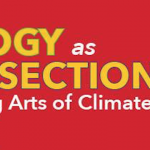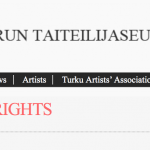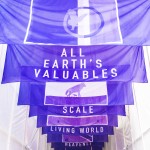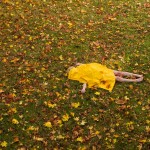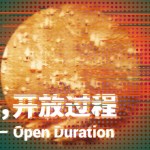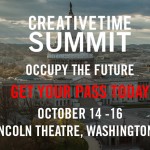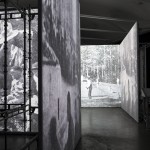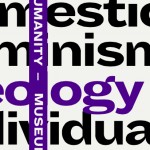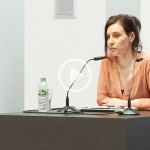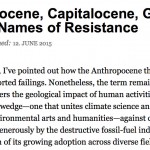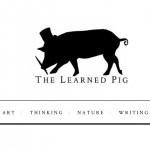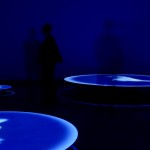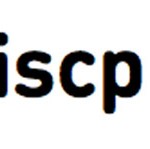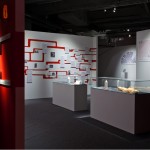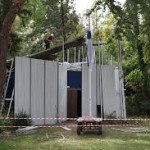Haastattelu: Maailma on Eläinten työllä rakennettu
Eläinoikeusakatemia, 2024
“We Belong to the Microbes”
Ferment Radio, 2023
In the Studio: Terike Haapoja
Collectors Agenda, 2020
Text Rasmus Kyllönen
‘Art as a practice of vulnerability’
– A Conversation with Terike Haapoja of the artist duo Gustafsson & Haapoja
Metropolis M, 27.01.2021. Text Alice Smits
Interspecies Politics, Animality and Silence
Terike Haapoja and Pablo José Ramírez in conversation
In: Infrasonica, April 2020
Witnessing Mortality
– On Duration, Being-With and the Anthropocene
Heather Davis in conversation with Terike Haapoja
In: Vulnerability, Animality, Community (Garret, 2020)
HD: How did you come to work on these subjects and themes, of animals and natureculture and mortality?
TH: I grew up in the countryside where I was completely immersed in a natural environment that was inhabited by all kinds of species. When I started to work with art I always had an issue with visual representations as two dimensional images, because I felt that a kind of spatial material connect- edness to my surroundings was far more accurate a reflection of how I actually experienced reality. At some point I then discovered imaging technologies such as the infrared camera, and that was the first media that I somehow got, because it reveals its quality as a mediator. You can’t look through it; instead you face a very material surface that’s translating the reality outside your senses. So the question of how we know the world through these sensory interfaces was already there. Entropy was the first video work I made with this technology. I still feel it’s really important to me.
A more personal path to that work is that there was a death in my family at the time and I felt an urgency to deal with the experience. Through this work I tried to understand this process of someone being a subject and transforming into being an object, without anything visible changing, a process that is almost incomprehensible to us, and to make it tangible.
I think these two approaches, the formal and the personal opened a door to a lot of things that then followed, that had to do with how to interpret external reality and how to engage with the world beyond our experiences or beyond our understanding through these technologies, but also with how our connection to the world is deeply human in that it is emotional and personal, too.
HD: I was looking back through your work and reading this beautiful book, which is actually a long conversation between Donna Haraway and Thyrza Nichols Goodeve. In it Donna Haraway says: “From my point of view the affirmation of dying seems absolutely fundamental. Affirmation not in the sense of glorifying death, but in the sense – to put it bluntly – that without mortality we’re nothing. In other words the fantasy of transcend- ing death is opposed to everything I care about.”1 And I think that this really resonates with your work, especially with your earlier work includ- ing Entropy, The Present, Community and Inhale – Exhale as well as the fetus images in Mind Over Matter Over Mind.
There is something really interesting about the ways in which you are taking up the processes of mortality. You require the viewer to actually sit and be with the creature who is losing heat, who is going through this process of death. I was really intrigued when I noticed that both Entropy and In and Out of Time are long: In and Out of Time is four and an half hours and Entropy is 25 minutes. Even 25 minutes is fairly long for a gallery piece. It’s a long amount of time for an audience member to sit and be with the work. But I think there’s something really important about that length of time. It forces this kind of witnessing and asks of the viewer to be in a temporal space that’s more akin to the reality of death, even though both of those pieces are still really sped up. There’s something about the fact of the works’ duration that I think is really important in terms of witnessing mortality.
TH: The shooting of those pieces have always been like wakes beside the bodies I’m with. It was important for me to repeat that process in the work. I think that a very core function of art is to provide interfaces through which we can be in relation to that which we cannot understand. In that sense it has to do with spirituality. I’m not religious, but I think these metaphors or these symbolic spaces allow us to form a relation to something we cannot ever rationally or cognitively understand – things such as the disappearance of subjectivity, which we can never really experience.
HD: It is hard not to see these works without thinking of the ongoing massive extinctions of plants, animals and human entangled ways of life. The extinction of a species is often visualized not as the death of a particular individual, but as the disappearance of a mass, a genus. And what I like about your approach to this topic is the way you’re asking the viewer to be witness to the death of a particular creature. I realize that some of the infrared works aren’t necessarily directly related to the theme of extinction, but Community, which is kind of an amalgamation of much of the infrared works, is. When you’re asking the viewer to witness the transformation of a creature from subjectivity to a community of bacteria and other creatures that start taking hold of a body after it’s no longer its own… there is some- thing about being with an individual that I think implicates the viewer in a different way than witnessing something en mass.
TH: I think forming emotional connection is necessary – I don’t know if you can say it’s necessary in order to evoke action. It’s not action that I try to evoke with my work directly, especially not with these works, but rather some kind of emotional connection that’s related to one’s own body and one’s own life experience as a being. It’s not anthropomorphization, it’s more a realization of the fact that we are bodily and that is what we share.
HD: The way that you approach these questions of mortality and the limits of knowledge, and the cyclical nature of time are infused with a lot of ethics, and Emmanuel Levinas’ thinking in particular. You even cite him when you say, in relation to The Presence: “The French philosopher Emmanuel Levinas describes the inner sense of time as a foundation of an ethical encounter. The other is not merely an object in my time, she or he also has a past and a future that are not accessible to me.” The passage from life to death in a lot of ways is the passage from being in time to no longer being in time, to not being bound by the passage of time. I think that there’s also a way in which you ask the viewer to just be in this durational moment with another creature. Despite the fact that Levinas never extends his ethics to other creatures I think there’s something about the ways in which he conceptualizes ethics that seems to inform so much of your work.
TH: His ideas have been important, especially exactly those parts of his think- ing about time. Another book that affected me a lot back when I started my studies was Roland Barthes’ Camera Lucida. It’s kind of an art school cliché. But it contains the kind of analysis of a medium that is about our existential being in the world that I felt I could relate to as an artist. He doesn’t just provide a semiotic theory, but opens up this space where it becomes visible how meanings are bound to our emotional, human exis- tence in the world. Through my early experiences of nature I’ve gained a very strong sense that this kind of being in the world is something that exists for all life forms, not just for humans.
HD: In “Involutionary Momentum” scholars Natasha Myers and Carla Hustak talk about orchids and Darwin, and the ways in which Darwin had to embody the movements of an insect in order to get the orchids to react. There’s a communicational system that is real amongst all kinds of non-human crea- tures, including plants, where they can warn other plants about the infesta- tion of particular insects and alter their bodily chemistry in order to get rid of insects that might be feeding on them. There’s such an amazing respon- siveness and a kind of knowledge about the world in them that it’s hard to think that the ways in which we use language are exceptional.
TH: The exhibition Closed Circuit – Open Duration was really a manifestation of the idea that when beings are born into time they are also born into mean- ings and meaningfulness. There was one work that was not really an inde- pendent piece but it was still very important for me to include in the exhibi- tion. The work consists of a video animation of a quote from the book Writing by Marguerite Duras. In that particular chapter she is trying to describe witnessing the death of a fly. It’s as if she’s trying to access that experience through language, and even if it’s impossible it is still a trial to bring meanings into a shareable form. I wanted to address this aspect of existence also, and not just our material connectedness. Natural sciences work so much on a reductionist basis where everything you can measure is pulled into the cumulative system of knowledge. And I feel that’s also one reason why, even though there is a danger of anthropomorphization, it is still very important to address the subjective and the particular, too.
HD: Bruno Latour has talked a lot throughout his career about the liveliness of the ways in which scientists describe the creatures that they’re work- ing with. Despite the fact that there is this tendency, within a Western scientific epistomology, to say that this or that is just an automatic response, in the writing of the scientific documents there are moments where the liveliness of the world betrays the impulse to scientific objectivism. For Latour there’s always a tension in scientific work between those two modalities. I think a lot of scientists, especially biologists or ethologists study what they do because of the fact that they are deeply attached to these creatures or plants.
Philosopher of science Vinciane Despret describes the ways in which the creatures that scientists are working with have meaning systems and have their own schematics of interpretation. Lab rats, for example, are actually interpreting what you are doing to them, and have their own meaning systems around what the experiments are. But they can get bored and start to be uncooperative, so coming up with better scientific results is about develop- ing a relationship with an animal. In the case of Darwin and his orchids, he’s developing a relationship with an orchid while trying to figure out what an orchid will respond to and what an orchid won’t respond to. It actually requires that kind of deep engagement that I think necessarily has to also be emotional, even if in the scientific literature that part often gets taken out.
Could you describe what it was like to put together the Closed Circuit – Open Duration show and your collaboration with the scientists?
TH: I had been working with infrared and ultrasound imaging technologies in the works that dealt with disappearance and death and that which is beyond life. Then I started to think that I want to use these scientific media as interfaces between organic processes that you usually see as somehow inert or dead – which of course they are not – and to allow for a real-time ethical relationship with the work and the viewer to take place. I started to work on this exhibition in 2007, and at that time there was not that much discourse around these issues. I first exhibited this show in 2008, and updated the work for the Venice Biennale in 2013.
During the initial research I found these incredible people from Helsinki University, such as ecologist Eija Juurola and engineer Toivo Pohja, who has been hand-building measuring devices for Helsinki University’s Hyytiälä Forestry Field Station for decades. It was fascinating to see how, for exam- ple, research on the carbon cycle is conducted through these small scale experiments where they measure the fixing of carbon from a single branch of a tree, and then make this huge generalization of that data. Science is so much about making generalizations. In that sense, the particular tree func- tions merely as a foundation from which that general knowledge is then extracted. I, in contrast, was interested in the particular experience of a particular tree, because our common sense experience of trees is that they are individuals like us.
The same is true with the work Inhale – Exhale. I ran into this concept of soil respiration that is used in forestry research for describing the process of decomposing, and how in that process carbon is released back into the atmosphere. I found that notion extremely poetic. I started to think of carbon flow and of the fact that we are stardust, as Joni Mitchell puts it. I am part of the carbon cycle and my mortality is a by-product of that cycle. But what my mortality means to me is not something scientific, but very personal. So I created this sculpture that would offer a way of internalizing what the carbon flow means for us as humans, that would include the sceintific reading as well.
HD: There’s something that I have be interested in lately, which is that our imaginations are increasingly framed by the figure of the molecular. We think about gender in relation to how much estrogen or testosterone we have in our body, we think about the climate through how much carbon or methane is there. I think one of the reasons there is a lack of action around things like climate change is that when you say carbon and methane, or talk through the figure of the molecule, it’s such an abstract thing. I think that what is really interesting about Inhale – Exhale and Dialogue is the ways in which you develop a personal relationship to a molecule. In doing that you actually show how it’s not just about this molecule, but that we’re connected through this cycle of decay. I find it a really potent image. It is anthropomorphizing to a certain degree, but I think that it has to be; we are human after all. There are limits to our understanding.
The early 20th century biologist Jakob von Uexküll describes the way in which each species has its own world. In Uexküll’s thinking species’ worlds overlap, but they remain distinct. The idea of there being one world is thus false: there’s actually multiple worlds that co-exist side-by-side, intertwined and entangled. Humans live in a world that’s particular to us, because of the ways in which we are able to sense and perceive our environment. Each creature has its own world, and it’s important to recognize that we are not going to be able to move out of our own sensoriums completely. However, I often think of trying to see or feel through other creature’s sensations is a kind of active empathy. This is what a lot of our technologies allow us to do – to extend our sensorium. I also think that that is what your work asks us to do, to make connections with plants and animals on an emotional scale that are enabled through the apparatus of technology and art. I realize that there is a danger in this move, a danger of subsuming the other into the self, but it’s also about trying to find a connection, a shared meaning or commu- nication. And it’s clear, from anyone who has ever paid attention, that it is quite possible to communicate across species.
HD: There seems to be a difference between some of your earlier work, like the Closed Circuit – Open Duration exhibition, and all the earlier infrared works, and the newer works which are more directly political, like the work by Gustafsson&Haapoja and also The Party of Others. What sparked you to make that kind of turn in your work, or do you see a continuity?
TH: It’s kind of continuous. After working on the Closed Circuit – Open Duration exhibition I started to feel, again, frustrated by the limits of working in the white cube and making these prototypes of theory. The whole exhibition was a manifestation of my world view in a way, a manifestation of what I thought of as an intertwined, more ethical relationship with the non-human world and our own mortality. I do think that the kind of poetics that these works hopefully can put into play is affecting people and has a political effect.
But if you think about what actually defines our relationship with the non-hu- man world, it is the law and the way in which the non-human world is actually represented in our decision making processes. And then you can easily see that notions of nature-cultures or hybridity are absent from those structures that in practice define our possibilities to interact with the non-human world. It made sense to look to legislation and parliamentary decision-making processes as sites where nature is really created as “the other”. Because that’s how it is: everything in nature is still considered to be a legal object, whereas almost everything human-made is considered to be a legal person. So I started to look into what it would look like if we brought these radical thoughts into the realm of decision-making. In that sense The Party of Others is a continuation of that line of thought. It’s a utopian project and a platform for thinking of what could be an utopian model of governance where everybody would be represented equally. Of course it’s a way of showing the limitations of representational democracy: a way of demonstrating how the core structures of our society are based on exclusion and how the idea of inclusion is not compatible with the basic idea which is essentially premised on the division between humans and nonhumans. It was a way of looking at how these theories actually radical- ize our whole notion of the state and the nation state, and the way we govern our reality at the moment.
HD: When you staged the participatory performance The Trial, what were the arguments that were given and how did the jury members react?
TH: The Trial was a play. We had actors who performed the parts and a script,
the rights of nature into our legal apparatus. I do think that law is a kind of ultimate reality-creating interface. Art is always somehow distanced from reality and everything you do in art becomes a representation. The only place where you can actually make reality is if you make laws. Because that’s where reality is somehow affected directly or created. The Trial was an attempt trial to show how, if you actually have a different kind of a matrix, a different kind of vocabulary through which you have to make the verdicts, how it actually would change our practical reality. I’m continuing this line of thought through a new project called the Transmodern-Modern Dictio- nary, which is a spin off from The Party of Others project and aims at introducing more ecocentric concepts to Western legislation through collaboration with Indigenous language groups. I do feel that I approach law exactly the same way as I approach an infrared camera: it’s a very material medium that somehow allows us to be in a relationship with the outside world.
HD: I was just reading about the Transmodern-Modern Dictionary. The new concepts that are used in workshops to rewrite selected passages of relevant local legislation in order to demonstrate how ideas really change political reality is a really brilliant intervention. It highlights the way in which the law itself is a representative medium and how people – judges and lawyers and legislators – are interpreting it constantly. So there’s always this process of representation and interpretation which is happening. The idea of changing the language to demonstrate how that would force a shift in policy is such an interesting idea, because it really ties in with notions of performativity of language itself and how that performativity is so mate- rial.
TH: We’ve worked very closely with the local community and have tried to be conscious about not just going somewhere and extracting some kind of artistic content from the local people. It’s more of a platform than an art work, though there is this poetic element of translation that I’m really interested in: How to translate thoughts between languages and between cultures, from non-human realities to this very human construct of law. I feel that my expertise is in tweaking that part, which is something that the activists or the legal scholars won’t be focusing on.
TH: Back when I started to work on these issues over ten years ago, the scene was very marginal. The mainstream art world really didn’t talk about these issues: definitely not about animals, but not even about the Anthropocene or climate crises. All of that was introduced later, in 2006 or 2007. How do you see the whole discourse around the Anthropocene and the booming of all these themes in the arts in recent years?
HD: I feel that it’s so present in art and contemporary theory simply because we can no longer ignore it. It’s not that in the early 2000s things were sig- nificantly better, but I think that there’s just a growing realization of the situation of ecological crisis. We are now seeing the immediate effects of climate change in a very real way, and are living through the sixth mass extinction event. So ecology becomes an important thing even to people who might not be drawn to these themes otherwise. Philosopher Isabelle Stengers talks about the ways in which “Gaia intrudes,” and I think that this is precisely what’s happening. Gaia is intruding on our imaginaries and our world – on the climatical world, environmental world, social world, on our political worlds. For me, the fact that artists are taking this up is a really good thing.
Even if it’s incredibly important for there to be political action, I also think it’s important for us to grapple emotionally and psychically with what is happening. Art is one of the best places to do that, because it holds a space where you can have what media theorist and curator Joanna Zylisnka has called an “a-moral response”. She doesn’t mean it in a sense of immoral, but in the sense of a space that can be held together in contradiction, a space of contested realities. I think that in order for us to really begin to imagine the world that is going to be confronting us, we need to have a plurality of vision. For me art is one of the best places to do that.
TH: It took, depending on how you count it, 400 or 2000 or 10 000 years (laughs) for us to get into this mess. It’s going to take a while for the paradigm to actually change. It’s not going to be over in the next 50 years. Collective thinking is slow. In that sense I feel that I can try to be rigorous in this tiny little space I have. It can effect change only so far, but we can still think that we are part of a bigger wave and that maybe in 100 years or 150 years it will have achieved something. For me this is a good way of not becoming desperate, but also of not freeing me from responsibility. It gives me a place of relief, personally, where I still can be satisfied with doing what I do, and feel that if I can just do the tasks at hand well, that’s enough.
HD: There’s something good in thinking about these kinds of time scales, and
in the long duration and being-with quality of your work–of certain videos, like Entropy, but also in terms of projects like The Party of Others and Transmodern – Modern Dictionary. They are taking that long view. Under- standing oneself as just a small part of a much larger system is helpful in terms of orienting ourselves to a much longer term politics. There is a necessity in thinking about political action as sustainable, sustaining over a long period of time.
TH: I do think it’s important. I was just talking with my father, who is a sculptor. My childhood home is in the woods, and that surrounding has affected both of us very deeply. He said that that presence of that forest is so important to him because it constantly reminds him of eternity, in that silent indifferent way that nature does. And that for him art is a way of managing his relation to that eternity. It’s a very beautiful way of putting it and I can relate to that.
HD: I love the expression “the silent indifference of nature.” I think that’s something that’s important to keep in mind, when dealing with all these other questions.
TH: I think that’s a good place to stop.
–
Heather Davis is an assistant professor of Culture and Media at Eugene Lang College, The New School. As an interdisciplinary scholar working in environmental humanities, media studies, and visual culture, she is interested in how the saturation of fossil fuels has shaped contemporary culture. Her recent book, Plastic Matter (Duke 2022), argues that plastic is the emblematic material of life in the twentieth and twenty-first centuries, showing how intimately oil has coated nearly every fabric of being, how the synthetic cannot be disentangled from the natural, and how a generalized toxicity is producing queer realities. She is a member of the Synthetic Collective, an interdisciplinary team of scientists, humanities scholars, and artists, who investigate and make visible plastic pollution in the Great Lakes. She is the co-editor of Art in the Anthropocene: Encounters Among Aesthetics, Politics, Environments and Epistemologies (Open Humanities Press, 2015) and editor of Desire Change: Contemporary Feminist Art in Canada (MAWA and McGill Queen’s UP, 2017).
